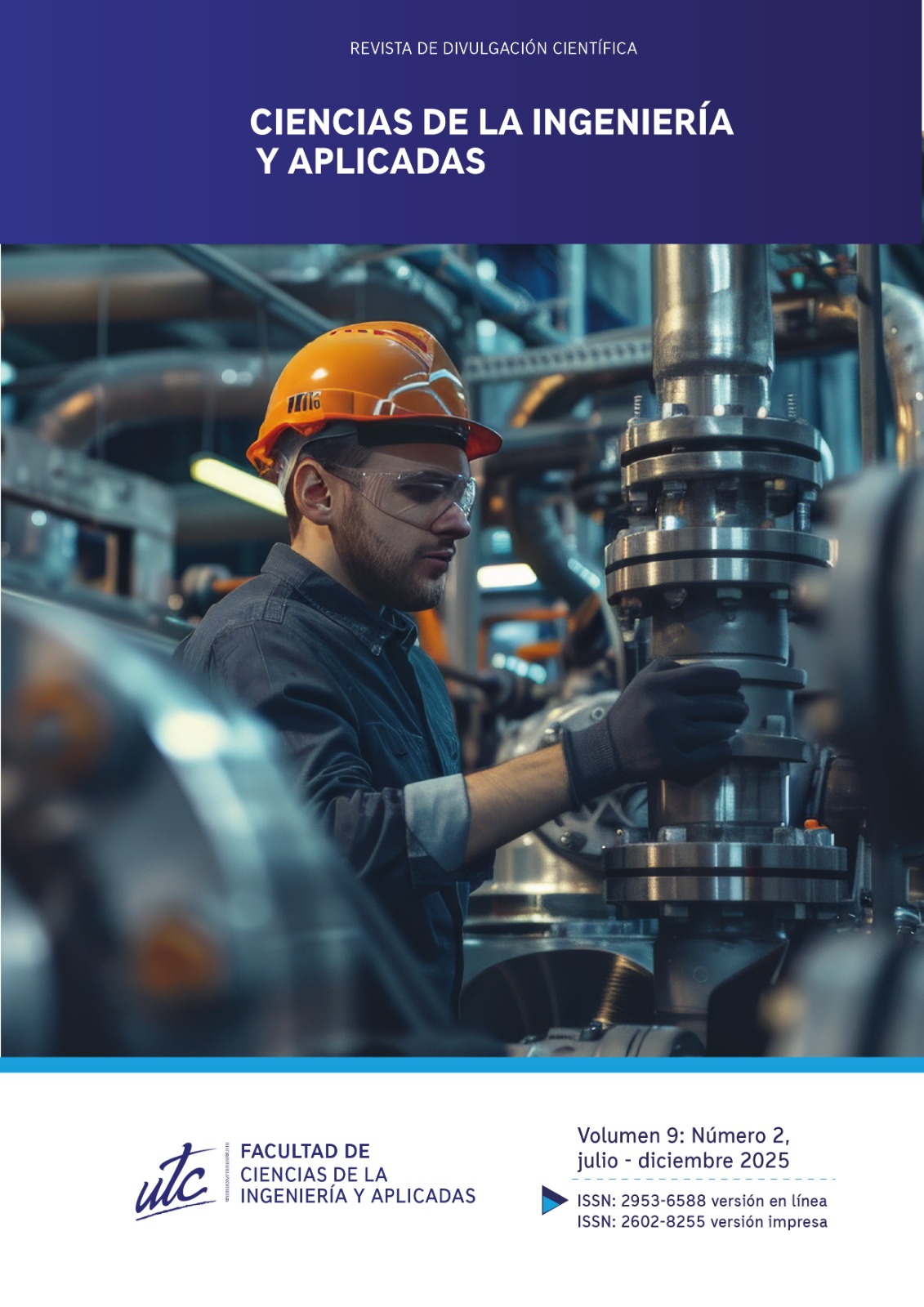Study of the Electric Power Generation System through the Analysis of Hydroelectric Plants to Highlight the Energy Deficit in Tungurahua Province
Abstract
The project "Study of the Power Generation System through the Analysis of Hydroelectric Plants to Highlight the Energy Deficit in the Province of Tungurahua" evaluates the current hydroelectric generation capacity in the region, identifying limitations and proposing strategies to improve electricity supply. In response to growing demand and frequent blackouts affecting key sectors such as industry and agriculture, a mixed methodology was applied. This included the analysis of historical data from institutions such as EEASA, ARCONEL, CONELEC, and SNI, along with surveys and interviews with technicians and industry professionals. The results indicate that hydroelectric plants operate at 62% of their capacity, with an average deficit of 48 MW during peak hours. The main causes include lack of maintenance, reduced water flow, and outdated infrastructure. As a solution, the study proposes technological modernization, diversification of the energy matrix by incorporating solar sources, and the implementation of differentiated tariffs to optimize consumption. The study emphasizes the need for strategic investments and sustainable energy planning to reduce vulnerability to climate change and ensure regional economic development. Tools such as HEC-ResSim and PLEXOS were used to model hydroelectric generation scenarios and assess the integration of complementary renewable energy sources.
Downloads
References
Comisión Económica para América Latina y el Caribe (CEPAL), Energía renovable en América Latina y su impacto en el desarrollo sostenible, 2019.
Ministerio de Energía y Recursos Naturales No Renovables del Ecuador, Informe de planificación energética nacional 2023-2035, 2023.
Organización Latinoamericana de Energía (OLADE), Panorama energético de América Latina y el Caribe, 2021.
Agencia Internacional de Energías Renovables (IRENA), The role of hydropower in global decarbonization, 2022.
Instituto Nacional de Estadística y Censos (INEC), Consumo energético en el sector industrial ecuatoriano: Estadísticas 2022-2023, 2023.
J. Ponce and F. Ramos, "Impacto de la variabilidad climática en la generación hidroeléctrica ecuatoriana", Revista Energía y Ambiente, vol. 15, no. 3, pp. 45–60, 2020.
J. Samaniego, "Gestión de riesgos en infraestructura hidroeléctrica: Modelos de resiliencia en América Latina", Revista de Energía Renovable, vol. 28, no. 2, pp. 78–95, 2021.
Programa de las Naciones Unidas para el Desarrollo (PNUD), Transición energética en países en desarrollo: Retos y oportunidades, 2021.
Centro de Estudios de Energía y Ambiente (CEEA), Análisis de la crisis energética en Ecuador: Factores y soluciones, 2023.
P. Vargas and R. Guzmán, "Redes inteligentes y su aplicación en la gestión de energía en Ecuador", Revista de Tecnología Energética, vol. 10, no. 4, pp. 34–50, 2022.
Red de Energía Renovable de América Latina, Estado actual y perspectivas de la energía hidroeléctrica en la región andina, 2022.
L. García, "Impacto de los embalses multipropósito en la estabilidad del suministro eléctrico en Ecuador", Revista de Ingeniería Hidroeléctrica, vol. 6, no. 1, pp. 15–30, 2021.
Comisión Federal de Electricidad (CFE), Estrategias para la eficiencia operativa en plantas hidroeléctricas: Lecciones aprendidas en América Latina, 2023.
Banco Interamericano de Desarrollo (BID), Desafíos para la integración de energías renovables en sistemas eléctricos aislados en Sudamérica, 2022.
M. García and J. Pérez, "Evaluación de impacto ambiental de proyectos hidroeléctricos en Ecuador", Revista de Sostenibilidad Energética, vol. 12, no. 2, pp. 22–40, 2021.
Centro de Investigación Energética (CIE), Optimización de costos operativos en hidroeléctricas: Casos de éxito en Ecuador y Perú, 2023.
Organización Mundial de la Energía (OME), Tendencias y desafíos en la generación hidroeléctrica en el contexto del cambio climático, 2022.
R. Pérez, "Modelos de simulación para la planificación hidroeléctrica en entornos de alta variabilidad hídrica", Revista de Modelado Energético, vol. 8, no. 3, pp. 55–70, 2020.
Copyright (c) 2025 Ciencias de la Ingeniería y Aplicadas

This work is licensed under a Creative Commons Attribution-NonCommercial-NoDerivatives 4.0 International License.
The authors who publish in this journal agree to the following terms:
- Creative Commons Attribution-NonCommercial-NoDerivatives License allows others to share the work with acknowledgment of authorship of the work and initial publication in this journal.
- Authors may separately establish additional agreements for the non-exclusive distribution of the version of the work published in the journal (for example, placing it in an institutional repository or publishing it in a book), with an acknowledgment of its initial publication in this journal.
- Authors are permitted and encouraged to disseminate their work electronically (for example, in institutional repositories or on their own website) before and during the submission process, as it can lead to productive exchanges, as well as further citation. earliest and largest of published works (See The Effect of Open Access) (in English).











